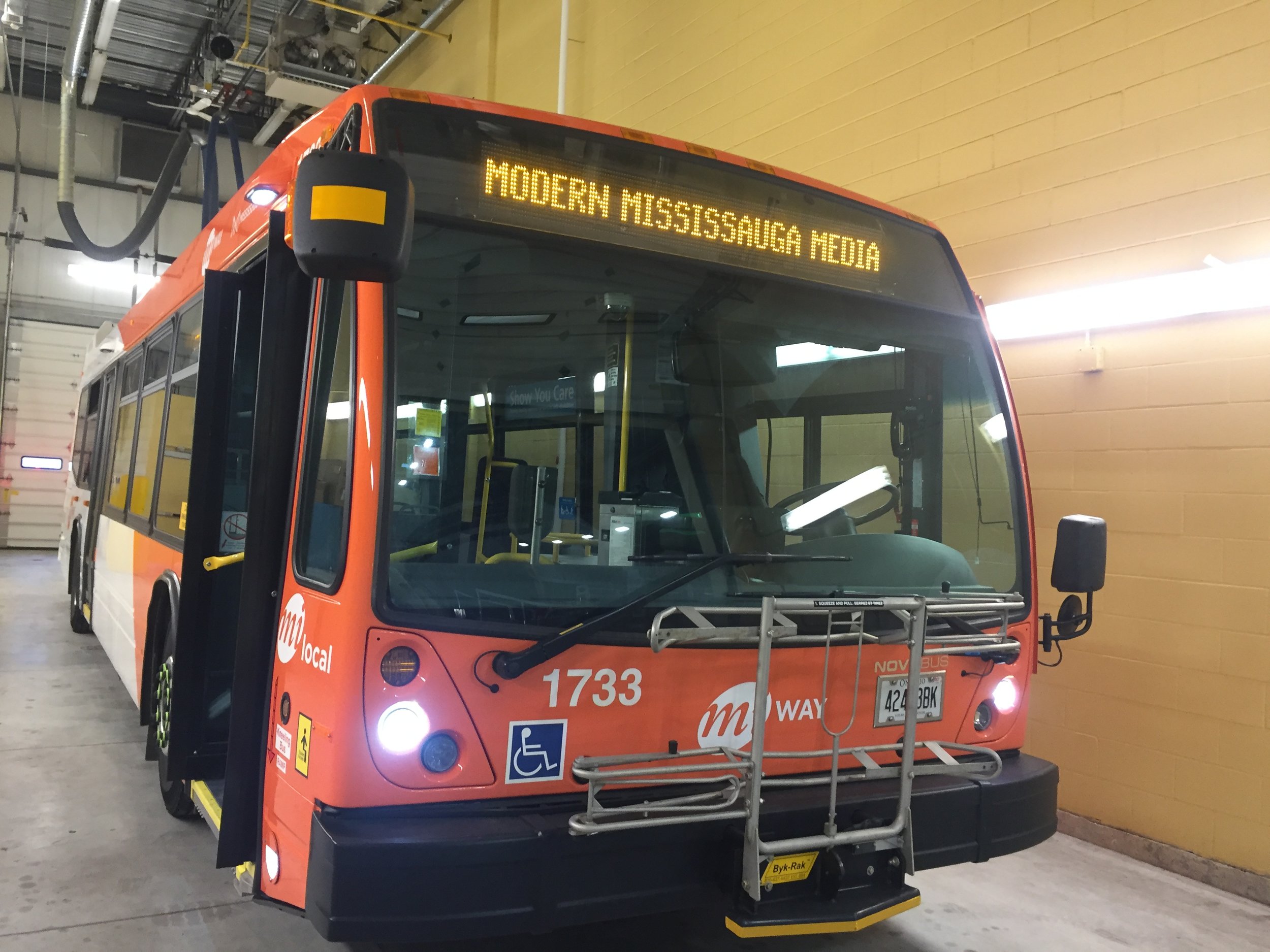Keeping MiWay Moving - A behind the scenes look with MiWay
/Last year someone boarded a MiWay bus 55 million times, or 1.05 million times weekly, the MiWay fleet puts on nearly 33.3 million kilometers collectively per year across Mississauga roads. That’s like driving the circumference of earth 830 times yearly. As such, MiWay’s fleet of nearly 500 buses need to be strategically managed and maintained as they crisscross the city serving our residents.
We were invited to visit the MiWay headquarters and depot for a behind the scenes look at their vast network of buses and to get a first-hand look at what it takes to keep their fleet in motion.
The big news at MiWay is the introduction of the new, 2017 model year Nova buses that have recently begun servicing Mississauga. This came with the recent Federal, Provincial and Municipal funding for transit to renew a part of an aging fleet, seeing as some current MiWay buses are 2003 models with over 1 million kilometers on the clock. The replacement of older models will be done over the next few years to space out deliveries and by December 31, 2018, we’re projected to have an even 500 buses on fleet.
The breakdown of overall types of buses is this:
“Regular” buses, which are 40 feet in length
Articulated buses, which are 60 feet in length
Orange and white buses are for local routes
Blue and white buses are for express routes
And recently driving off into the sunset this March were the short, 30 foot Eldorado buses
So we’re getting new buses…huzzah! But won’t that mean we have too many on fleet?
Nope, not at all. MiWay is replacing/retiring 30 of the 2008 60 foot articulated buses by year end to make room for the new Nova’s.
As of April 30th there will be a minimum of 8 articulated buses in use coupled with 37 of the local 40 foot buses, all of which are orange and white.
All in all, there’ll be 67 new Nova buses, 30 articulated and 37 local buses with a further 12 local Nova buses arriving this October, which completes the order.
During a site visit to their primary garage at 975 Central Parkway West (there’s also a secondary location in Malton), we spoke with Darren Ridings, Manager of Transit Maintenance.
After a few hours of conversation, it’s remarkable what Ridings and his highly talented team do daily to ensure MiWay buses are in the best of shape daily, year round.
Every night, the hardworking team of General Service Persons (GSP) washes, cleans and fuels all the buses, ensuring they’re ready for the next day’s valuable passengers. These folks work very hard and while it’s a job that’s unseen by the public, it’s certainly one who’s effects are felt daily.
Interestingly, a 40 foot bus and 60 foot articulated bus almost have the same sized gas tank with each tank respectively holding 492L and 467L.
Furthermore, Ridings told me that there are no fuel gauges on MiWay buses. In fact, most city buses don’t have fuel gauges as it’s one extra gauge to manage.
Worried that after reading this a bus will run out of fuel? Don’t be. MiWay carefully planned their routes to make sure buses never run out of gas. Yes, buses are refueled daily but primarily overnight via the GSP team and through their onsite gas station.
Their intricate RFID computer system provides a plethora of information, including how much fuel was put in, consumed, when it was done, etc. and it covers the entire lifespan of each bus. So if a bus is using too much fuel, Ridings and his team can analyze the data to find the cause and rectify it and ensure the buses are running as efficiently as possible.
Miway has a 20% spare ratio of their nearly 500 buses to allow for routine maintenance, MTO Inspections, collisions, flat tires and other issues. You simply can’t remove half the buses at once to do oil changes, right? That’d nearly cripple the fleet and leave a ton of folks without transportation.
I asked Ridings what some of his obstacles are managing one of Canada’s largest transit fleets, to which he replied “supplying the right number of buses in the right configuration to meet the schedule. Because there’s no one size fits all, that number changes daily and I’ve got to react quickly to that. My goal is to ensure everyone at a bus stop has a bus to board.”
He goes on to say “my challenge is that anything mechanical or electrical can break, so my team and I try to minimize number of out of service situations by regular and preventative maintenance. Unplanned breakdowns are what I’m trying to mitigate…we keep a careful eye on the fleet and start predicting longevity of brakes, engine, etc.”
A beautiful new Nova bus
The key here is finding balance of fleet maintenance. Each bus that has maintenance done is taken off the fleet and part of that 20% spare is used to fill in the gap. It comes down to maintaining buses to a high standard in a timely manner to prevent any breakdowns as to ensure seamless service for the public.
Between the introduction of the new Nova buses and managing the maintenance of the existing buses, coordinating with scheduling and operations, reacting to situations out of his control, along with several other daily tasks, Riding speaks very highly of his entire team and realizes that they’re crucial to the Maintenance department’s success.
Their effects of their hard work are felt, even if not seen. There’s often a flurry of activity at 975 Central Parkway West that contributes to keeping our city in motion.
By the numbers:
312 - Average kms each bus clocks on a week day
71,300- Average km’s each bus clocks yearly
37 – Amount of km the route 109 does daily, the longest MiWay route
1,201,994 – Kms bus # 0304 has the odometer; the highest on the fleet as of March 16th, 2018
7 – Amount of kms the route 37 does daily, the shortest MiWay
305/70R/22.5 – The tire size of all buses
50,000L – The amount of diesel delivered daily to the Central Parkway location, or 18,250,000L yearly
1,300,000L – The amount of diesel delivered yearly to the Malton location
34 – Number of seats on the new Nova buses
8 – Number of wheels on a 60 foot articulated Nova bus
80 – The average number of passengers that safely fit on a new Nova bus (sitting & standing)
500 – Number of buses in total on the MiWay fleet by Dec 31, 2018
(15 hybrid, 335 40-ft orange, 83 40-ft blue. 45 60-ft orange, 22 60-ft blue)

















